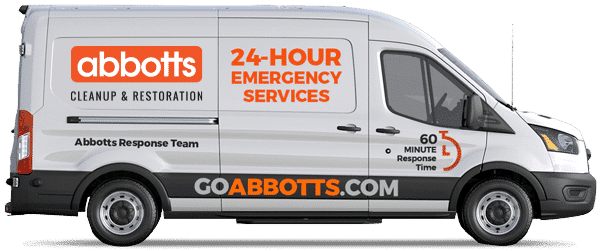Sewage Backup Do’s and Don’ts
Sewage backup tops the list ‘Homeowner Horrors’. The smell is just the beginning – a disgusting reminder of the bacteria, viruses, parasites and hazardous waste that has invaded your home. Even in small amounts, sewage can pose health hazards. If not quickly cleaned and sanitized, these hazards can spread to other areas of your home causing illness and disease.
On this project, the drained backed up into the basement causing Category 3 water damage. The water will need to be extracted and surfaces power-washed, sanitized and treated with antimicrobials. Cabinets, carpet, pad, drywall, and baseboards need to be removed and either cleaned & sanitized or replaced.
Category 3 water damage is water that is highly contaminated and could cause death or serious illness if consumed by humans. This includes sewage, flood waters from rivers and streams and ground surface water. Understanding the health risks is important to managing the cleanup and preventing additional contamination.
- Do keep children and pets away from the backup. This will keep them from coming in contact with raw sewage, which can make them very ill and can be spread by feet and paws.
- Do assume that anything sewage touched – even if now dry – is contaminated. Disease causing contaminants will remain behind after moisture is removed. Be especially careful in close areas, like crawlspaces.
- Do turn off electrical power if it can be safely accessed. Water and electricity don’t mix. If you cannot reach shutoffs without stepping in the contaminated area, leave.
- Do turn off water sources that might be adding to the drain system. That includes sinks and toilet flushing. If necessary the building’s water supply may need to be shut off.
- Do not flush the toilets! It will just make the situation worse.
- Do not touch raw sewage with your bare hands. It’s best to avoid the area until it’s been professionally cleaned and sanitized. Regular soaps and detergents are no match for the contaminants present in wastewater. If you absolutely must be there, wear rubber gloves.
- Do not try to clean it yourself. Commercially available cleaning products and equipment aren’t designed for sanitization at this level. Without the right training, you can expose yourself to bacteria and other biohazards.Special detergents and disinfectants are needed to safely remove bacteria, fungus and other pathogens.
- Do not allow the sewage contamination to sit. Moisture creates a breeding ground for dangerous mold growth on top of the bacteria and parasites in the sewage. Uncontrolled, contaminants can become airborne.
- Do not run air/heating/cooling systems. Airborne pathogens that were limited to the spill area will be spread throughout the building, and contaminate the HVAC system in the process.
- Do not move contaminated contents into uncontaminated areas. Even if dry, until they are decontaminated, pathogens can spread onto surfaces they come in contact with. Move them outside to a contained staging area.

